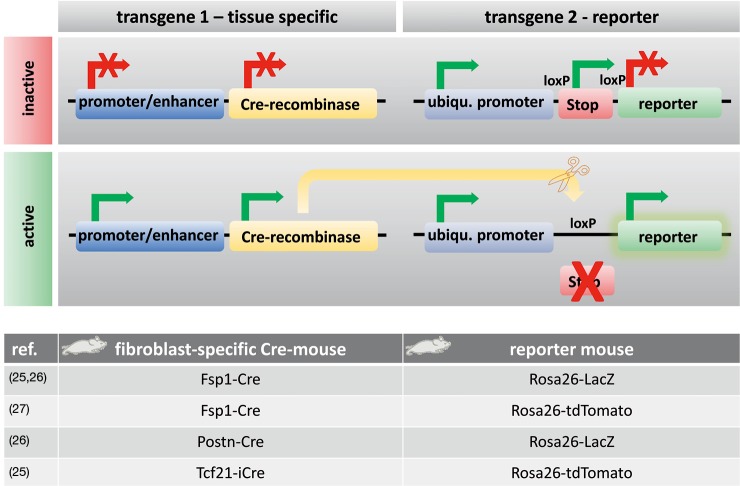Figure 2.
Lineage tracing with transgenic systems. In this example, lineage tracing is explained by a double transgenic system. Transgene 1 expresses a site-specific Cre-recombinase in a cell-specific manner. Transgene 2 contains a reporter gene that is designed to permanently label the cell of interest after site-specific recombination. The mechanism works as the following. Cre-recombinase is driven by a cell-specific promoter or enhancer (e.g., a putative fibroblast-specific promoter) and is expressed in every cell of a specific type (e.g., fibroblast). Reporter genes, such as fluorescent proteins or ß-galactosidase behind a loxP site-flanked stop cassette (e.g., an antibiotic resistance gene), are driven by ubiquitous promoters. Ubiquitous promoters are active in every cell, regardless of their origin, although the expression of the reporter gene is initially blocked by the stop cassette before recombination. If Cre-recombinase is expressed, then it excises the stop cassette only in the cell type of interest because it recognizes the loxP sites in front of the reporter, which can then be expressed and irreversibly mark the cell of interest (e.g., fibroblast) (25-27).

